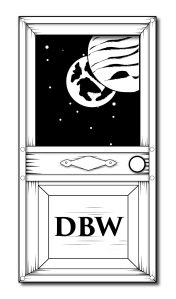This week on DBW, I am featuring a guest post by Andrew Knighton. Andrew writes fantasy, science fiction, and steampunk, and shares my passion for clear communication. Welcome to DBW, Andrew!
Communication isn’t easy, which is a shame, because it’s vital to human life. The ability to tell someone else how to grow crops, or how to read and write, or that you love them – these are fundamentals of human life.
Fortunately there are lessons on communication, as on everything in life, in that greatest source of human lessons – children’s animated fantasy films. Kids’ films get away with what adult films can’t, both in wild flights of imagination and in teaching us, gently but firmly, lessons in how to live. So today we’re going to learn from How To Train Your Dragon.
Set patterns – a communication problem
One of the greatest barriers to communication is that we each tend towards a single way of communicating. My way might not be the same as yours, but it’s my way and I’ll default to it every time. The same way of expressing ideas, the same mannerisms of speech, the same way of writing. Yoda doesn’t start using good grammar when Luke’s back is turned – he’s just being himself.
We can learn different ways to communicate – it’s a huge part of teacher training, as well as many management courses. But working out which style to apply in which situation? That can be far trickier.
How to train your human
This is where the wonderful How To Train Your Dragon comes in. You know that scene in the middle where… wait, you don’t know that scene, you haven’t seen the film, you thought it was just for kids? Well, you should probably fix that, because How To Train Your Dragon is a great slice of imaginative modern fantasy. A story of Vikings and monsters, of ambition and misunderstanding, of having your view of the world turned on its head.
Oh, and communication. The film is full of problems with poor communication and solutions that come from people communicating. No more so than in a scene where Hiccup, our teenage protagonist, tries for the first time to communicate with Toothless the dragon. The two have no language in common, no shared frame of understanding. How will he manage it?
The answer is trial and error. Hiccup uses gestures, speech, touch, even dirt drawings and piles of food. When Toothless seems wary of his raw fish dinner, Hiccup himself takes a scaly, slippery bite. No tactic works perfectly the first time, but by trying different approaches, by persisting not with his own preferred communication style but with everything he can think of, he eventually gets through.
Trial and error
I’m not suggesting that you bring raw fish to your next meeting, or try to resolve family conflicts by doodling in the dirt. But approaching the same act of communication in different ways can reap rich rewards.
I used to work in process improvement. As part of that job I often had to persuade managers to take risks in changing working practices. I tried using statistics. I tried using diagrams. I tried impassioned speeches and promises that I’d do all the work if they just let me fix this damn thing. Then one day, through endless trial and error, I discovered the tactic that worked on the worst of them – tell them my idea, shut up, and wait six months for them to think the idea was their own. Then they’d be all over it.
This was not my preferred way of persuading people. It was not what any of my training had taught me. But trial and error, not persisting at things that didn’t work, taught me how to do it. Like Hiccup, I had trained my managerial dragons.
Just keep trying
So go forth and try different ways of communicating. Don’t persist with what doesn’t work. Don’t even persist with what half works. Keep trying new things in new situations, and sooner or later you’ll find the right approach to each one.
And while you’re about it, you should go see How To Train Your Dragon 2, which is out now. Because what could be better than Vikings fighting dragons? That’s right – Vikings riding dragons!
***
If you enjoyed Andrew’s post, you should check out his blog or his wonderful short story “Surprise Me,” which was recently published in Daily Science Fiction.
This is the first time I’ve had a guest post. I’d love to know what you think, so please feel free to comment below. I like the idea of hosting occasional guest posts from my blogging community. If you’re feeling inspired by DBW to write about communication within your favourite sci-fi/fantasy story universe, please write to me and we can chat about it!

Reblogged this on Andrew Knighton writes and commented:
I’m a big fan of How To Train Your Dragon, and also of Sue Archer’s Doorway Between Worlds blog, where she discusses communication lessons from science fiction and fantasy. So today I’m proud to present a guest post for DWB all about communication in How To Train Your Dragon. Please go check it out, and while you’re there have a browse around Doorway Between Worlds – I particularly recommend the article ‘Would Your Captain Be Proud?’
LikeLike
Loved the guest post, Sue. Mr. Knighton did a marvelous job communicating a problem that is not only reoccurring and needs serious attention if we aim to find success in life, but also did it succinctly–which I think is a massive challenge for most folks in charge of communication. A bonus!
Thanks for the introduction to another talented writer. 🙂
LikeLike
I’m glad, you liked it, Shelley! I will be sure to pass along your praise. 🙂
LikeLike
Thanks for the kind comment! A lot of this communication stuff can be very challenging, so any time I’ve got the message across well is a win.
LikeLike